Hiking Photography Tips: Capture Epic Adventure & Landscape Photos
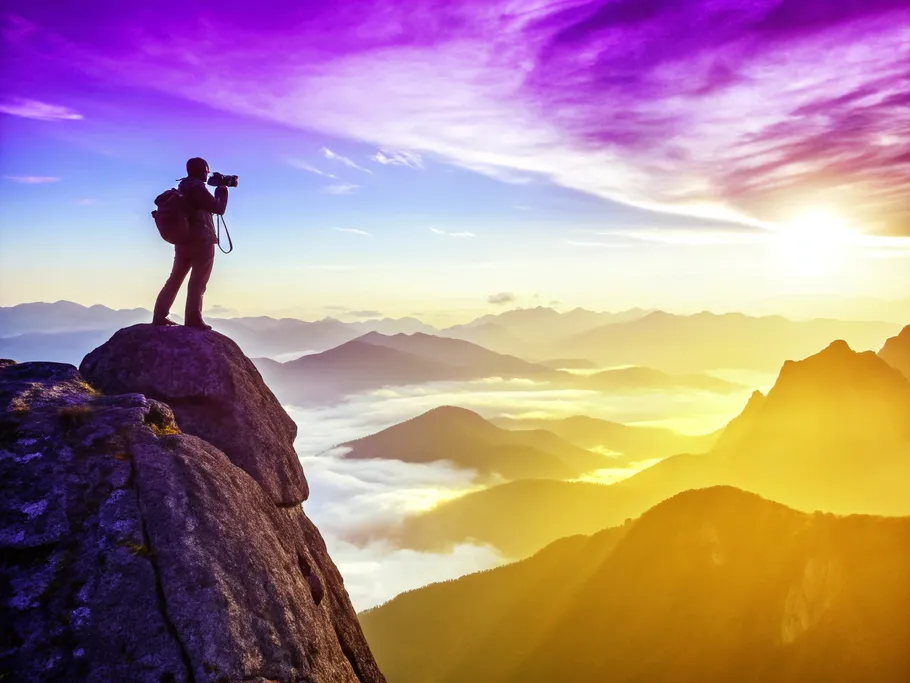

Let's be real. Hiking isn't just for the health nuts and adrenaline junkies anymore. The trails are now packed with photographers, influencers aiming to capture scenic views, and everyone in between, all chasing that one epic, scenic shot. But let’s be honest, most hiking photos are… forgettable.
Taking genuinely good hiking photos is a skill. It’s a dance between you, your camera, and the wild, unpredictable outdoors. The good news? You can totally learn the steps. Here are some no-nonsense hiking photography tips to elevate your shots from “meh” to “holy shit.”
What’s the point of owning the finest camera for Instagram if it’s buried in your backpack when a bald eagle does a fly-by? A camera harness is a game-changer for any serious trail photographer. It straps the camera to your chest, ready for action. No more fumbling, no more dropped gear.
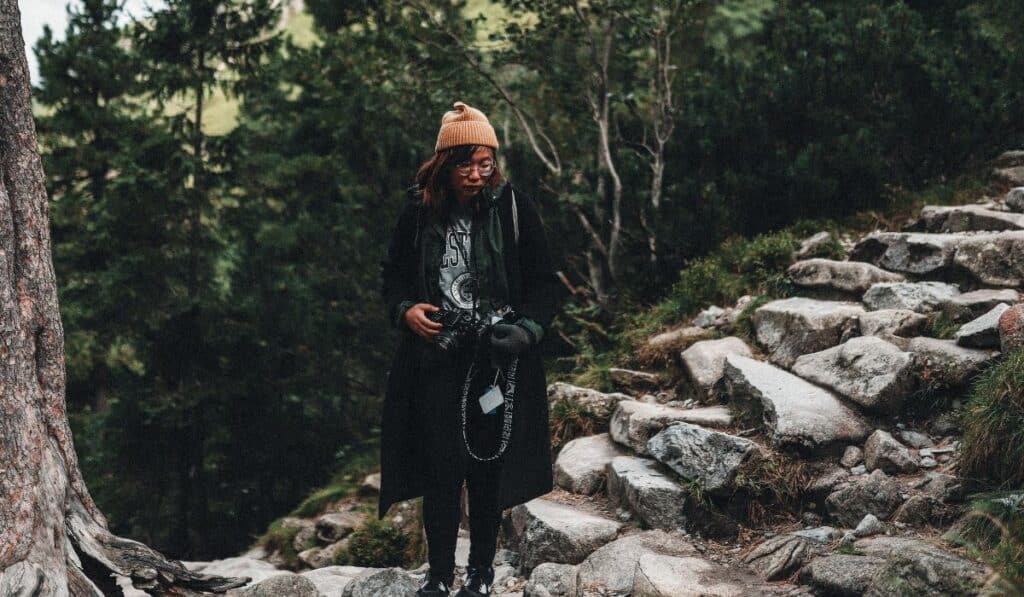
If you're using your phone, guess what? They make smartphone harnesses, too. Unless you enjoy stopping, dropping your pack, and rummaging around every time you see something cool, just get the harness. It’s that simple.
Nature is chaotic and beautiful, which means your backgrounds can be incredibly busy. If you don't tell your camera what to focus on, it'll get confused and you'll get a blurry mess.
For DSLR users, this means using your viewfinder to compose the shot. With a smartphone, it's even easier: just tap the screen where your subject is. The camera will lock focus on them, creating a crisp subject against a beautifully blurred backdrop. Done.
Posed photos are fine, but the real magic of adventure photography is in the candid moments. The struggle, the laughter, the sheer effort of the hike—that’s the story.
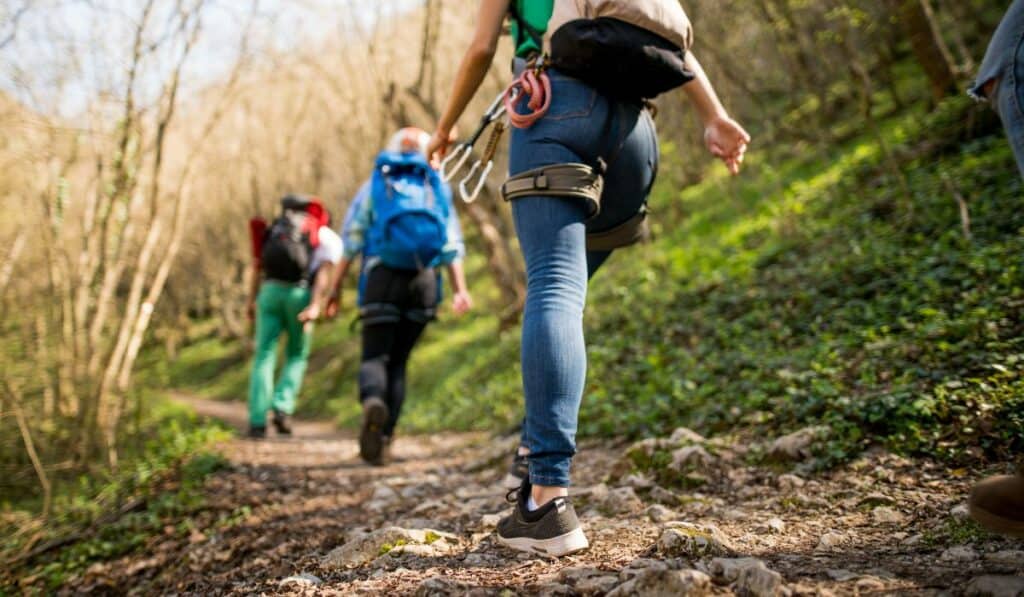
Find a great backdrop and have your friends walk through the frame. This means you have to be nimble. Sometimes you’ll need to sprint ahead of the group; other times you’ll lag behind to get the perfect angle. It’s a workout, but the dynamic, authentic shots are worth the sweat.
To move beyond basic snapshots, you need to understand the three pillars of photography: shutter speed, aperture, and ISO. Mastering this trio is key to unlocking the best settings for outdoor photography.
Shutter Speed
This is how fast your camera's shutter opens and closes. A fast shutter speed (like 1/1000s) freezes motion, perfect for capturing a friend jumping over a creek. A slow shutter speed lets in more light and creates motion blur, which can be used creatively for things like waterfalls or light trails.
Aperture
This is the opening in your lens. A wide aperture (a low f-number like f/1.8) lets in a lot of light and creates a shallow depth of field, making your subject pop against a blurry background. A smaller aperture (a high f-number like f/11) keeps more of the scene in focus, which is ideal for grand landscape photography.
ISO
This is your camera sensor's sensitivity to light. On a bright, sunny day, you can use a low ISO (like 100) for a clean, crisp image. In low light, you'll need to bump up the ISO to compensate. Be careful, though—a very high ISO can introduce noise or grain into your photo. It's a balancing act.
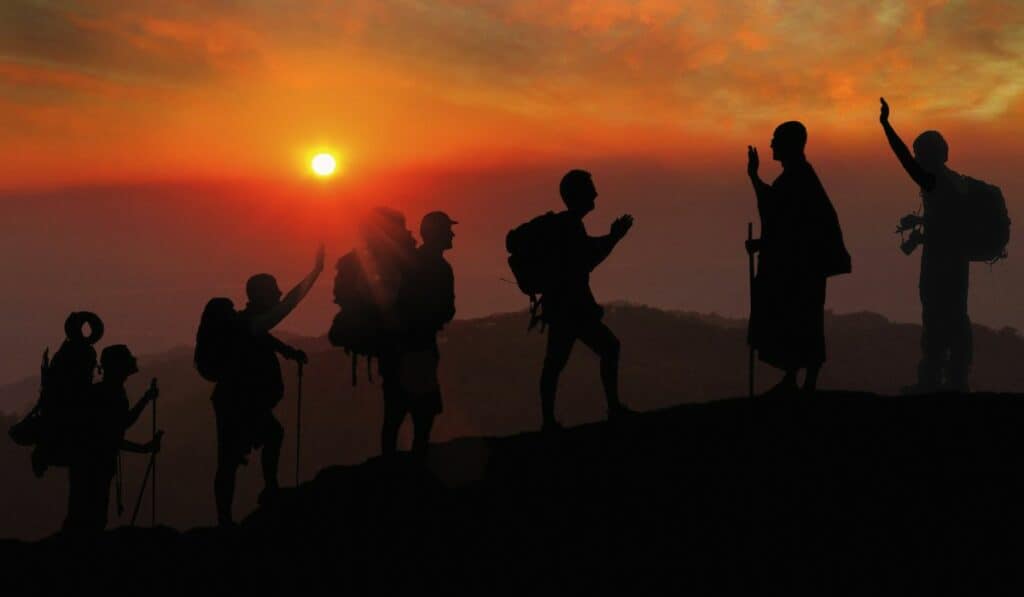
There's a reason photographers are obsessed with the "golden hour." It's the first hour after sunrise and the last hour before sunset. The golden hour lighting is soft, warm, and directional, making everything it touches look magical. It's the ultimate lighting for amazing Instagram pictures for a reason. Plan your hikes to start or end during this time. You won't regret it.
Don't be the person who brings every piece of gear they own on a three-mile hike. A heavy pack will kill your creativity and your back. For a day hike, all you really need is water, snacks, your camera, and maybe one or two key accessories. If you're shooting the sunset, bring a tripod, not a flash. Think about your goal and pack only what's essential. Choosing the right photography equipment is crucial for balancing performance and portability.
If you're hiking alone, a tripod is your best friend. It’s the only way to get high-quality shots of yourself in the landscape without resorting to a shaky selfie. Set it up, frame the shot, use a timer or remote, and you're both the photographer and the model.
A GoPro is another fantastic, lightweight option. You can mount it on a tripod and control it from your phone, making it incredibly easy to capture epic pictures of yourself for Instagram.
This is a simple but effective trick. The natural world is full of greens, browns, and blues. If you or your subject wears a bright color like red, yellow, or orange, you'll create an instant focal point. The color contrast makes the subject pop from the background, immediately drawing the viewer's eye.
Very few photos come out of the camera looking perfect. A little bit of photo editing can make a huge difference. You don't need to be a Photoshop wizard.
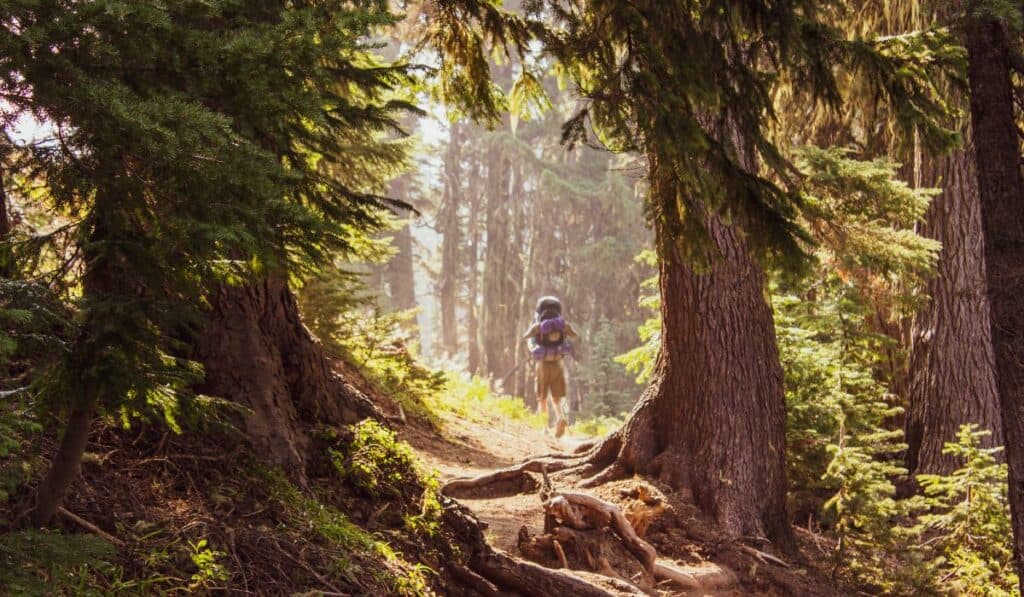
Apps like VSCO, Lightroom, and Snapseed are incredibly powerful and easy to use. A few subtle tweaks to exposure, contrast, and saturation can transform a good photo into a great one. The goal is to enhance, not to create something that looks fake. You can even speed up your workflow with presets, and there are many great sources for free presets online.
Improving any skill, like taking amazing photos, truly blossoms with consistent practice and a willingness to learn from others. It's brave to share your work or ask questions, as that opens the door to gentle feedback and quiet growth.
Join online communities focused on hiking photography. Share your work, ask for advice, and see what other people are creating. Remember, every small step of effort helps you move forward on your path. Now get out there and start shooting.
Look, whether you’re a hardcore hiker or just in it for the 'gram, photography is how we try to bottle up those moments. But let's be honest, there's a thin line between capturing the feeling of a moment and just documenting it for likes.
Getting a truly stunning shot—the kind that makes someone stop scrolling and feel something—is about more than just color contrast and camera settings. It’s about preserving the beauty you found on the trail and making it your own art.
So take these hiking photography tips, get out there, and practice. The goal isn't just to take a picture, but to create something that feels true. Happy hiking.
While these strategies are proven to work, every account is unique. Get a personalized audit that analyzes your specific account data and provides tailored recommendations for growth and monetization.